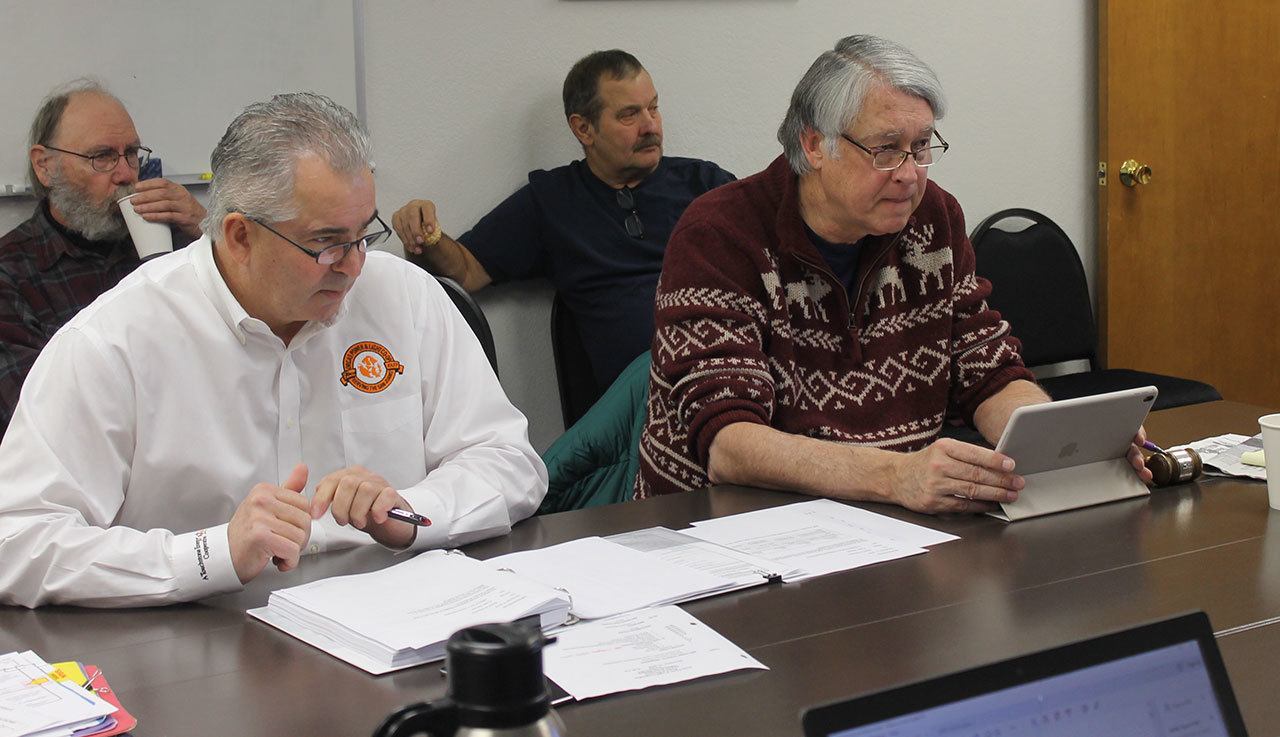The OPALCO board approved a 5 percent rate increase in 2017 in a 5-1 vote at the Dec. 15 board meeting.
The increase will be added to the energy used, per kWh, and not the fixed, monthly facility charge. Board member and retired OPALCO General Manager Randy Cornelius said he voted no to spark discussion on the next rate review, scheduled for 2018.
Cornelius explained that even though he paid to add insulation and a heat pump into his home to conserve energy, he still exceeded the lowest usage cap in OPALCO’s winter block. When he uses more than the set 3,000 kWh for that block, he is charged about 1 percent more, per kWh.
“We tell people to conserve energy and how clean our energy is, but we punish people when they use it,” said Cornelius. “It sounds like we don’t really mean it when we say we want people to use all electric.”
A member of the public also commented that the monthly $40.54 facility fee should be eliminated because it does not incentivize people to use less electricity.
Board President Vince Dauciunas said that if OPALCO members paid solely on energy used, with no facility fee, those who use 750 kWh of energy or less would get a break, but everyone else would pay more.
Dauciunas advised that the board gather and review data in 2017, to compare facility fees and usage fees in varying amounts to determine the best kWh amount for the seasonal block caps. They would use the data to set goals and objectives on the rate structure in 2018 to use when determining rates from then on.
The facility fee, said Board Member Mark Madsen, is to ensure everyone contributes to OPALCO’s electrical system, like staff and equipment, including seasonal members. The facility fee creates a safety net of funds in case revenue is short, like in 2014 after a warm November, said Dauciunas. If revenue falls short, the co-op could struggle to pay for maintenance and emergency fees.
OPALCO attributed the 2017 rate increase to raised labor fees contracted by OPALCO’s union based on the cost of living, as well as Bonneville Power Association’s raised power rates. BPA distributes power to OPALCO, which determines rates by adding BPA’s fees and the operational costs to deliver the power (like employee salaries, buildings and equipment) and dividing it by the number of members.
The board did not vote to stagger elections at the meeting, as members who reviewed the election process suggested. The proposed process sought to routinely involve more members in elections, by having two or three districts up for re-election in the same year. For the schedule to work, some current board members would have to increase their term by a year, and some would have to lessen it by that. Some thought it wasn’t fair and others thought it complicated the election process. The board decided to table the issue and will maintain current bylaws to vote for two board seats in one district a year.
OPALCO, or Orcas Power and Light Cooperative, is a nonprofit cooperative, jointly owned by its members who use the electricity it provides to San Juan County.
Those who use the services are considered members and pay a one-time fee of $5 to join. For more information, visit www.opalco.com.



